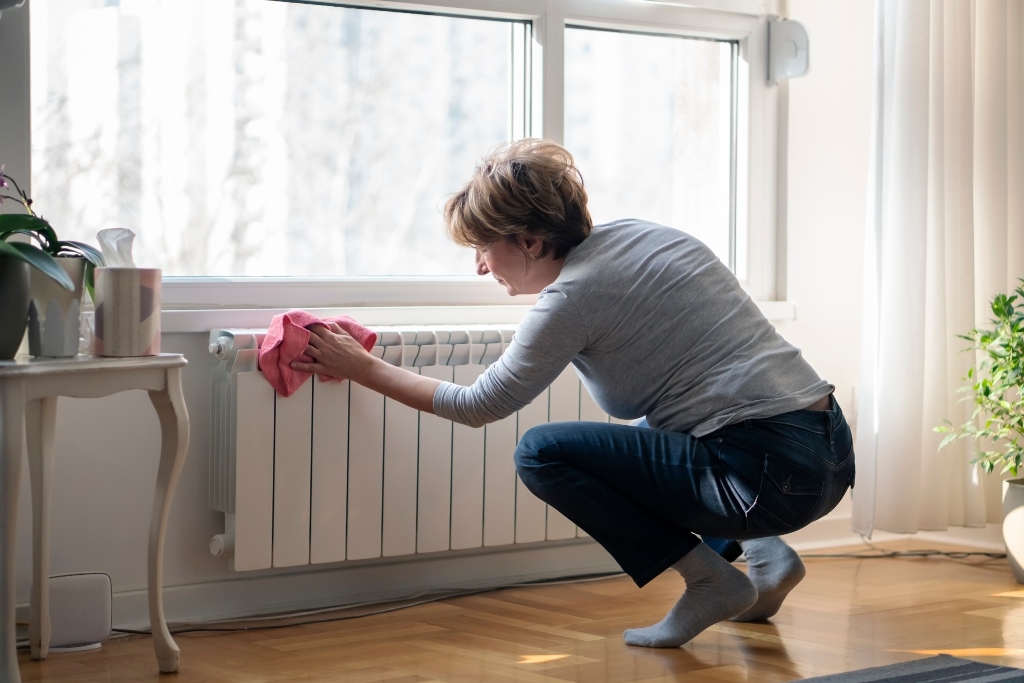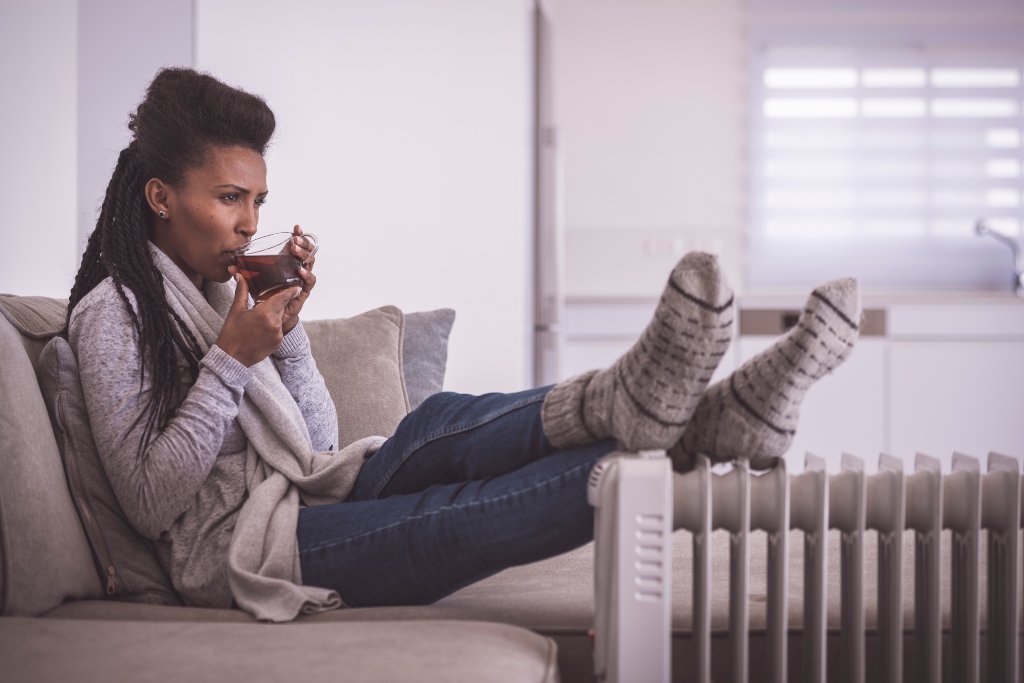7 Winter Furnace Maintenance Tips
Posted on by WestAIR Heating & Cooling

We rely on our heating systems a lot during Minnesota’s long, brutal winters. As we continue through the coldest months of the year, homeowners should take steps to minimize stress on their HVAC system to help prevent inconvenient breakdowns and costly repairs. Use these winter furnace maintenance tips to enjoy optimal performance, efficiency, and comfort all season long.
- Keep the air filter clean. A clogged filter forces the HVAC system to work harder, decreases efficiency, and is also the most common cause of breakdowns. Be sure to change or clean your air filter every month.
- Maintain a clear, clean area around the unit. Giving your furnace room to breathe promotes safe, efficient operation, as well as easy access to the unit for you or your HVAC specialist if necessary. As a general rule, give your furnace or indoor air handling unit three feet of clearance and clean the space regularly.
- Inspect flue pipes for damage. Your furnace naturally produces gases during the combustion process, and flue pipes carry these gases to your home’s ventilation system to be safely exhausted. Check the pipes for any damage that could be leaking CO into the home, as well as signs of soot and/or rusting. Have an experienced HVAC technician inspect any issues immediately.
- Clean supply and return vents. Supply vents feed warm air produced by your furnace to your home; return vents pull old indoor air and deliver it to the HVAC system to maintain indoor air quality and comfort. Cleaning them helps prevent dust and other airborne irritants from getting into the air you breathe or sucked back into the system.
- Check for signs of dirty ductwork. Air ducts carry air between your HVAC system and home and naturally collect dirt, dust, and other debris over time. Issues to look for include mold around your vents or furnace, excessive dust accumulation (especially around vents), inconsistent heating throughout the home, unexplained increases in allergy symptoms and/or respiratory problems, and signs of a rodent or pest infestation. Schedule professional duct cleaning service if you see any of these, and plan to do so annually.
- Turn the temperature down but keep the system on. Turning the thermostat down at night or when the house is empty can help cut utility costs, but don’t turn the system completely off. Having to fire the furnace back up whenever you wake up or return home requires more energy and adds unnecessary stress. Just remember to go no lower than 55 degrees (or closer to 60 during extreme cold) to help prevent frozen pipes. For ultimate ease and efficiency, consider installing a programmable thermostat that lets you pre-set temperature settings for multiple days ahead of time.
- Don’t ignore the warning signs. Don’t wait for a complete breakdown to give your furnace the attention it needs. If you notice uneven or inefficient heating, unexplained spikes in energy bills, or any other furnace issue warning signs, call WestAIR for professional diagnosis and repair before the issue gets worse.
It may be the beginning of a new year, but we have a lot of cold days and harsh weather ahead of us yet. Follow these winter furnace maintenance tips to help your heating system run safely, efficiently, and uninterrupted for the rest of the season.
Trust the highly knowledgeable and experienced HVAC professionals at WestAIR for all your heating and cooling needs. Contact us to learn more.
This entry was posted in Duct Cleaning,Energy Savings,Furnace,Health Tips,Heating,HVAC Maintenance,Indoor Air Quality,Tips,Winter and tagged Duct cleaning, Duct cleaning service, Ductwork, Energy efficiency, Furnace Education, Furnace Maintenance, Furnace Maintenance Tips, Furnace Tips, Heating, Heating System, Heating System Education, Homeowner Education, Homeowner Tips, HVAC Maintenance, HVAC Maintenance Tips, WestAIR Heating & Cooling, Winter Furnace Maintenance Tips, Winter Heating Tips, Winter HVAC, Winter HVAC Safety, Winter HVAC Tips
7 Tips for Winter Indoor Air Quality Maintenance
Posted on by WestAIR Heating & Cooling

With the recent snowfall and chilly temps, there’s no denying that winter is almost here. Time to prepare! As heating season makes its way to Minnesota, we must remember to keep the air in our home clean as well as warm. Use this guide to winter indoor air quality maintenance to keep your family cozy, healthy, and happy throughout the season.
Poor Winter Indoor Air Quality: Causes and Effects
When cold weather hits, we seal our homes to prevent the warm air produced by our furnaces from escaping. While this helps increase comfort and energy efficiency, it also traps dust, pollen, and other airborne contaminants inside the home that then decrease indoor air quality. Common signs of poor winter indoor air quality include:
- Dry, itchy, or watery eyes
- Cold or flu symptoms: coughing, sneezing, nausea
- Heightened symptoms of asthma and other respiratory illness
- Fatigue and trouble concentrating
- Irritation of the nose and throat, particularly dryness
- Headaches
Tips for Winter Indoor Air Quality Maintenance
Escaping the bitter cold of Minnesota winters means spending more time inside our home, making clean indoor air crucial to our comfort and health. Thankfully, homeowners can improve and maintain air quality with these helpful tips.
- Clean regularly – Don’t let dust, mold spores, and other pollutants build up around the home. Dust hard surfaces and vacuum (using a vacuum with a HEPA filter if possible) at least weekly. Use non-toxic cleaners free of volatile organic compounds (VOCs), which are a major contributor to unhealthy air.
- Maintain a clean filter – Air filters keep dust and other debris from entering and harming your HVAC system, but must be maintained in order to prevent these irritants from making their way back into the air. Remember to change air filters monthly or clean if resuable.
- Schedule annual service maintenance – Ensure your heating system runs at peak performance and provides clean, warm air with professional maintenance service from a WestAIR HVAC expert.
- Have your ductwork cleaned – Dirt, dust, pet hair and dander, and other irritants settle inside your air ducts over time. Schedule duct cleaning service before winter is in full swing, and plan to do so annually.
- Enhance ventilation with an air exchanger – Sealing the home in winter leads to recycled, stale air inside. To resolve this, air exchangers deliver a continuous flow of fresh, filtered outdoor air while simultaneously exhausting unhealthy indoor air.
- Control humidity with a whole house humidifier – Humidity plays a crucial role for indoor air quality. Dry winter air can cause nose, throat, and skin discomfort, as well as damage wood fixtures and furniture over time. Installing a whole house humidifier will help maintain proper humidity levels in your home.
- Consider additional clean air solutions – Air cleaners work with your current system to remove excess dust and other irritants that decrease indoor air quality. Ultraviolet (UV) light purification systems utilize UV rays to eliminate odors harmful airborne pathogens like viruses, bacteria, mold, and VOCs.
This year has presented us all with new and unique challenges. But no matter how unpredictable 2020 has been, we know we can always plan for harsh winter weather here in Minnesota. We’re already seeing the temps drop and snow fall, so don’t wait! Use these winter indoor air quality maintenance tips to enjoy clean, comfy air inside your home this heating season.
For all your heating and cooling needs, trust the HVAC experts at WestAIR. Contact us today to learn more.
This entry was posted in Duct Cleaning,Furnace,Health Tips,Heating,Humidifier,Humidity,HVAC Maintenance,Indoor Air Quality,Tips,Winter and tagged Air cleaner, Air exchanger, Duct cleaning, Duct cleaning service, Heating, Heating Tips, Humidfier, Humidity, Humidity Management, HVAC tips, Indoor air quality, Indoor air quality solutions, Professional duct cleaning, Residential HVAC, Ventilation, WestAIR Heating & Cooling, Winter, Winter HVAC, Winter HVAC Tips, Winter Indoor Air Quality, Winter Indoor Air Quality Maintenance, Winter Tips, Winterize
Subscribe to Our Blog
With RSS feeds, you don't have to visit our site everyday to keep up to date. Simply subscribe to our blog via RSS or Email and our posts will come to you!
Search Blog Posts
Categories
Archives
- April 2024 (1)
- February 2024 (1)
- January 2024 (1)
- February 2023 (1)
- January 2023 (1)
- December 2022 (1)
- November 2022 (1)
- October 2022 (1)
- September 2022 (1)
- August 2022 (1)
- July 2022 (1)
- June 2022 (1)
- May 2022 (1)
- April 2022 (1)
- March 2022 (1)
- February 2022 (2)
- December 2021 (1)
- November 2021 (1)
- October 2021 (1)
- September 2021 (1)
- August 2021 (1)
- July 2021 (1)
- June 2021 (1)
- May 2021 (1)
- April 2021 (1)
- March 2021 (2)
- January 2021 (1)
- December 2020 (1)
- November 2020 (1)
- October 2020 (1)
- September 2020 (1)
- August 2020 (1)
- July 2020 (1)
- June 2020 (1)
- May 2020 (1)
- April 2020 (1)
- March 2020 (1)
- February 2020 (2)
- November 2019 (1)
- August 2019 (2)
- June 2019 (1)
- May 2019 (1)
- April 2019 (1)
- March 2019 (1)
- February 2019 (1)
- January 2019 (1)
- December 2018 (1)
- November 2018 (1)
- October 2018 (1)
- September 2018 (1)
- August 2018 (2)
- July 2018 (1)
- May 2018 (1)
- April 2018 (1)
- March 2018 (1)
- February 2018 (1)
- January 2018 (1)
- December 2017 (3)
- November 2017 (2)
- October 2017 (2)
- September 2017 (2)
- August 2017 (1)
- July 2017 (2)
- June 2017 (3)
- May 2017 (2)
- January 2017 (4)
- November 2016 (1)
- September 2016 (3)
- July 2016 (2)
- June 2016 (2)
- May 2016 (4)
- April 2016 (1)
- March 2016 (2)
- February 2016 (2)
- January 2016 (1)
- August 2015 (1)
- July 2015 (1)
- June 2015 (3)
- May 2015 (1)
- July 2014 (2)
- June 2014 (1)
- April 2014 (1)
- March 2014 (1)
- February 2014 (2)
- October 2013 (1)
- May 2013 (1)
- March 2013 (1)
- February 2013 (1)
- August 2012 (1)
- July 2012 (2)
- June 2012 (2)
- May 2012 (2)
- March 2012 (1)
- February 2012 (1)
- December 2011 (1)
- November 2011 (1)
- October 2011 (1)
- September 2011 (1)
- August 2011 (1)
- June 2011 (1)
- May 2011 (1)
 Subscribe
Subscribe Subscribe
Subscribe